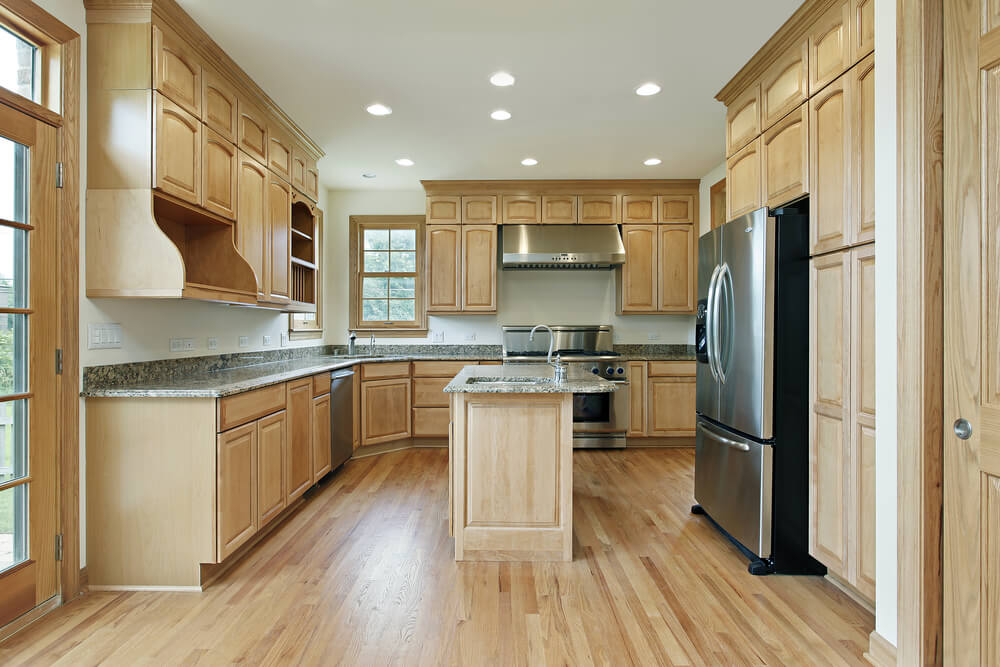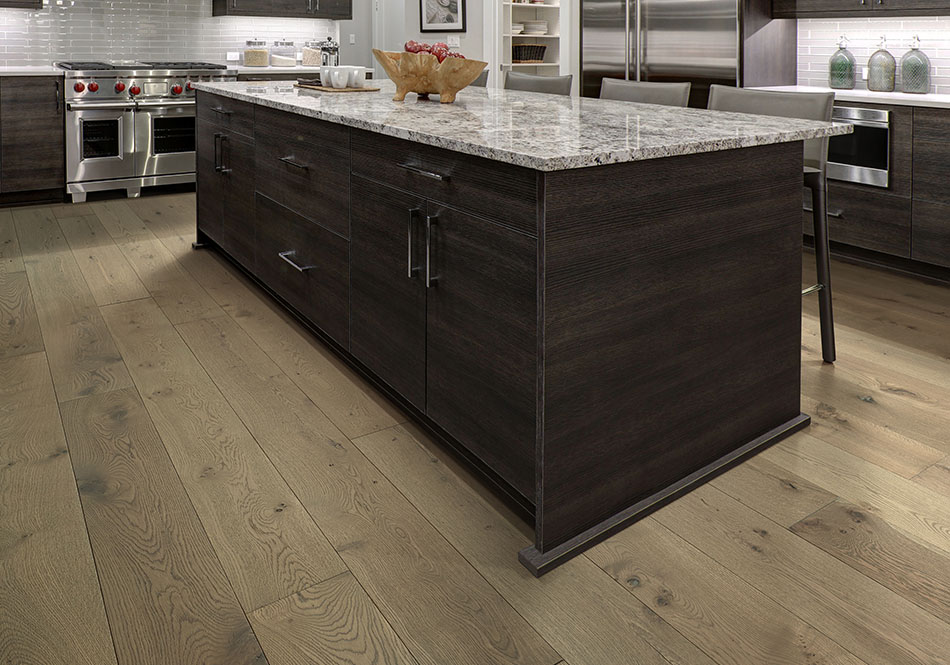Choosing the Right Wood Floors and Cabinets

Selecting the right wood for your floors and cabinets is a crucial decision that can significantly impact the aesthetic appeal and longevity of your home. The choice involves considering factors like durability, colour variations, and maintenance requirements. Understanding the characteristics of different wood species will help you make informed choices that align with your design vision and lifestyle.
Wood Species Commonly Used for Flooring and Cabinets
Various wood species are popular for flooring and cabinetry due to their unique properties and aesthetics. Here’s a breakdown of some commonly used options:
- Oak: Known for its strength, durability, and beautiful grain patterns, oak is a classic choice for both floors and cabinets. It comes in a wide range of colours, from light blonde to rich browns, and can be stained to achieve different looks.
- Maple: Maple is another durable hardwood with a tight grain pattern. It’s often favoured for its light colour and subtle grain, making it suitable for contemporary and minimalist designs.
- Cherry: Cherry wood is prized for its warm reddish-brown colour and rich grain. It ages beautifully, developing a deep, lustrous patina over time.
- Walnut: Walnut wood is known for its striking dark brown colour and bold grain patterns. Its unique appearance adds a touch of sophistication to any space.
- Hickory: Hickory is a highly durable hardwood with a distinctive grain pattern and a wide range of colour variations, from light browns to deep reds.
Comparing Durability, Colour Variations, and Maintenance Requirements
Each wood species offers distinct advantages and disadvantages in terms of durability, colour variations, and maintenance requirements.
- Durability: Hardwood species like oak, maple, and hickory are highly durable and resistant to scratches and dents. Softwoods, such as pine and cedar, are more susceptible to damage but are generally more affordable.
- Colour Variations: Wood species exhibit natural variations in colour and grain patterns. Oak, for instance, can range from light blonde to rich browns, while cherry wood has warm reddish-brown hues. These variations contribute to the unique character of each piece of wood.
- Maintenance Requirements: Hardwood floors generally require regular cleaning and occasional refinishing. The frequency of refinishing depends on the traffic and wear and tear the floor experiences.
Harmonious Wood Combinations
Creating visually appealing and harmonious contrasts or complementary looks involves selecting wood combinations that complement each other. Here are some examples:
- Light Floors and Dark Cabinets: This combination creates a striking contrast that adds depth and dimension to a space. For instance, light oak floors paired with dark walnut cabinets create a sophisticated and elegant look.
- Dark Floors and Light Cabinets: This combination creates a more traditional and classic feel. For example, dark hickory floors paired with light maple cabinets can add warmth and charm to a room.
- Matching Floors and Cabinets: Choosing the same wood species for both floors and cabinets creates a cohesive and unified look. For instance, using cherry wood for both flooring and cabinets can create a warm and inviting ambiance.
Wood Floor and Cabinet Options Comparison Table
| Wood Species | Color Range | Grain Pattern | Hardness Rating (Janka Scale) | Maintenance Needs |
|---|---|---|---|---|
| Oak | Light blonde to rich browns | Prominent, open grain | 1360 | Regular cleaning, occasional refinishing |
| Maple | Light brown to cream | Tight, fine grain | 1450 | Regular cleaning, occasional refinishing |
| Cherry | Warm reddish-brown | Medium, straight grain | 950 | Regular cleaning, occasional refinishing |
| Walnut | Dark brown to black | Bold, swirling grain | 1010 | Regular cleaning, occasional refinishing |
| Hickory | Light brown to deep reds | Distinctive, irregular grain | 1820 | Regular cleaning, occasional refinishing |
Color and Style Considerations

Choosing the right wood floor and cabinet colors can make a significant difference in the overall aesthetic of a room. By considering the interplay of color, style, and finish, you can create a harmonious and visually appealing space.
Complementary Color Combinations
Selecting colors that complement each other is crucial for achieving a cohesive look. For instance, warm wood tones like cherry or walnut can be paired with light-colored cabinets to create a balanced and inviting atmosphere. Conversely, cool wood tones like oak or maple can be paired with darker cabinets to add a touch of sophistication and depth.
Warm wood tones often evoke a sense of coziness and comfort, while cool wood tones can lend a more modern and sleek feel.
Contrasting Colors for Visual Interest
Introducing contrasting colors can create visual interest and define different areas within a room. For example, using dark wood floors with white cabinets can create a striking contrast, highlighting the architectural features and adding a sense of spaciousness. Conversely, light wood floors with dark cabinets can ground the space and create a sense of intimacy.
Contrasting colors can be used to draw attention to specific areas or features, while complementary colors can create a more harmonious and unified look.
Impact of Wood Finishes
The finish applied to wood floors and cabinets can significantly impact their overall appearance. Stain, paint, and natural oil each create distinct visual effects and can be used to enhance the natural beauty of the wood or create a more contemporary look.
- Stain: Stain enhances the natural grain and color of wood, creating a rich and warm effect. Different stain colors can be used to create a range of hues, from light and natural to dark and dramatic.
- Paint: Painting wood floors or cabinets offers a blank canvas for creating a unique and personalized look. You can choose from a wide range of colors and finishes to match your desired style.
- Natural Oil: Applying natural oil to wood surfaces enhances its natural beauty and creates a protective finish. It allows the wood to breathe and age gracefully, revealing a rich patina over time.
Example Combinations
- Modern Farmhouse: Light-toned oak floors with white shaker-style cabinets, accented by natural wood countertops and black hardware.
- Contemporary Minimalist: Dark walnut floors with sleek, white lacquered cabinets, featuring integrated handles and a minimalist design aesthetic.
- Traditional Elegance: Rich mahogany floors with dark cherry cabinets, adorned with ornate moldings and brass hardware.
- Rustic Charm: Reclaimed wood floors with distressed, painted cabinets, incorporating natural elements like woven baskets and linen curtains.
Practical Considerations and Installation: How To Coordinate Wood Floors And Cabinets

The success of coordinating wood floors and cabinets hinges on careful planning and execution during the installation process. Matching the installation methods for both elements is paramount, ensuring a seamless transition and a cohesive aesthetic. Additionally, proper subfloor preparation is crucial for achieving a stable and long-lasting finish. Lastly, careful planning and consideration are needed to manage the installation around existing features like doors, windows, and appliances.
Installation Methods
The installation method for both wood floors and cabinets must be compatible to avoid potential issues. For instance, floating wood floors, which are not attached to the subfloor, can create unevenness if installed adjacent to cabinets that are nailed or glued to the subfloor. Similarly, cabinets installed over a floating floor can cause movement and instability in the floor.
- Floating floors: These floors are installed over a moisture barrier and are not directly attached to the subfloor. They are typically used in areas where the subfloor is not perfectly level. Floating floors are often used in conjunction with cabinets that are also not attached to the subfloor, such as those that are installed on legs or adjustable bases.
- Nailed or glued floors: These floors are directly attached to the subfloor, providing a more secure and stable installation. They are typically used in areas where the subfloor is level and stable. Nailed or glued floors are often used in conjunction with cabinets that are also attached to the subfloor, such as those that are installed on a solid base.
Subfloor Preparation, How to coordinate wood floors and cabinets
The subfloor is the foundation for both wood floors and cabinets. It must be level, stable, and free of any defects to ensure a smooth and even installation. The subfloor preparation process involves assessing the existing subfloor, repairing any defects, and ensuring that it is level and stable.
- Assessing the existing subfloor: This involves checking for any signs of damage, such as cracks, gaps, or unevenness. The subfloor should also be checked for moisture, as this can cause warping and other problems.
- Repairing defects: Any defects in the subfloor should be repaired before installing wood floors or cabinets. This may involve patching cracks, filling gaps, or leveling uneven areas.
- Ensuring level and stability: The subfloor must be level and stable to ensure that the wood floors and cabinets are installed properly. This can be achieved by using shims or other leveling materials.
Installation Around Existing Features
Installing wood floors and cabinets around existing features like doors, windows, and appliances can be challenging. Carefully planning and executing the installation is crucial to ensure a seamless transition and a professional finish.
- Doors and windows: When installing wood floors around doors and windows, it is important to ensure that the floor is level and flush with the door or window frame. This can be achieved by using a transition strip or molding.
- Appliances: Appliances can present a challenge when installing wood floors or cabinets. It is important to ensure that the floor is level and flush with the appliance base. This can be achieved by using a transition strip or molding.
Step-by-Step Guide for Coordinated Installation
Installing wood floors and cabinets in a coordinated manner requires a systematic approach. The following steps Artikel the key considerations for a successful installation:
- Prepare the subfloor: As discussed earlier, the subfloor must be level, stable, and free of defects. This is a critical first step to ensure a successful installation.
- Install the cabinets: Install the cabinets first, ensuring they are level and plumb. This provides a reference point for the wood floor installation.
- Install the wood floors: Install the wood floors, working around the cabinets. Carefully plan the transition between the floors and the cabinets to ensure a seamless finish.
- Add transition strips or moldings: Use transition strips or moldings to create a smooth transition between the wood floors and the cabinets. This helps to create a cohesive and professional finish.
- Finish the installation: Once the wood floors and cabinets are installed, finish the installation by adding any necessary trim or moldings. This includes baseboards, crown molding, and other decorative elements.
How to coordinate wood floors and cabinets – Coordinating wood floors and cabinets can create a cohesive and stylish look in any room, especially in a small space. When working with a smaller bedroom, it’s crucial to consider how furniture placement can maximize functionality and flow. A well-designed layout, such as those found in our guide on how to layout a small bedroom , can help create a sense of spaciousness.
By carefully considering both floor and cabinet choices, you can achieve a harmonious balance that complements the overall design of your bedroom.
Choosing wood floors that complement your cabinets is a key step in creating a cohesive kitchen design. If you’re drawn to a calming and sophisticated aesthetic, consider pairing your wood cabinets with a sage green kitchen wall. Sage green kitchen walls with wood cabinets create a timeless and elegant backdrop, allowing the wood floors to provide warmth and texture.
When selecting your wood flooring, aim for a shade that harmonizes with the green walls, perhaps a light oak or a warm walnut, to achieve a balanced and inviting space.
